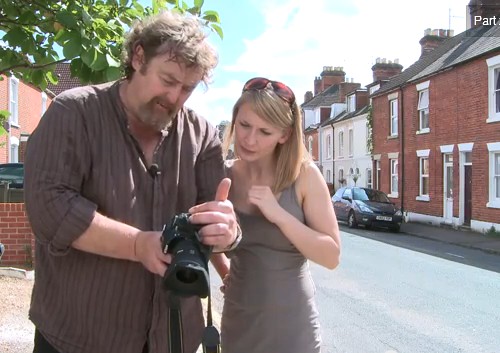
• Don’t Zoom – Move •
Lenses, perspective, field of view and depth of field…
Most people don’t realise it. Lenses have strong distortion at some focal lengths. Other settings force other changes. Are you aware of how focal length changes your pictures? Read on… we continue our theme on lenses for the weekend.
Focal Length – points of interest
Controlling our exposure involves three different types of camera control…
- Shutter Speed – the length of time the shutter is open to the light
- Aperture – how much light the lens lets in
- ISO – the sensitivity of the digital sensor to light
Most people think these are the only controls that we have on a camera. In fact when we use zoom lenses we also have control over three factors. Changing the focal length gives us control over…
- Field of view
- Depth of field
- Perspective
Aperture, a primary control in the camera, controls depth of field. We can also control the depth of field by changing focal length. If the aperture is held at the same size, changing the focal length shows us the effect on the depth of field. It is a control that many people often forget or don’t understand.
Having more than one control for the depth of field requires some thinking about. So it is useful to understand the impact of how you control your lens.
In the first video, Mike Brown shows us the way we can expect different focal lengths to affect our shots. It is not easy to think these things through without seeing the practical impact. This video is particularly useful for gaining some understanding about how focal lengths can make or break a shot.
I particularly like the way Mike Browne shows us how the field of view changes with focal length and how it affects the shot. Watch out for that!
Focal Length Changes 3 Things – Focal Length Explained
What’s in a lens?
Lens “elements” are the individual glass elements in a lens… something those who did the quiz about lenses will probably know now! Those elements can be designed and combined to create an almost infinite range of different photographic lenses. There is some distortion, and some other impacts for choosing a particular focal length. If you are not sure what these are then some basic practice with your lenses can be very informative.
In the second video Mike Brown shows you how you can set up a test to see how your focal length impacts your pictures. In an interesting range of pictures at the end of the video the test shows both the distortions that occur at low focal lengths and how that changes to other effects as the focal length gets longer.
Why is this important? Every lens has its little quirks and distortions. If you know how your lenses behave you can set up your shots to suit. You will be able to understand, for example, why some people look so awful at particular focal lengths. Face shapes, body shapes, background visibility and size all change at different focal lengths. Knowing your lenses will help you to make the best of your subject. You can do this test with any camera from a telephone to a top quality professional camera and lens system.
Don’t zoom – MOVE! Focal Length Explained
Comments, additions, amendments or ideas on this article? Contact Us
or why not leave a comment at the bottom of the page…
Like this article? Don’t miss the next one — sign up for tips by email.
Photokonnexion Photographic Glossary – Definitions and articles.
A comprehensive resource for lenses on Photokonnexion
A quiz about lenses… what do you know?
Exposure links
Definition: Exposure
Definition: Aperture
Definition: f number
Definition: ISO
Definition: Shutter Speed



2 responses to “Lenses have a hidden impact – what is it?”